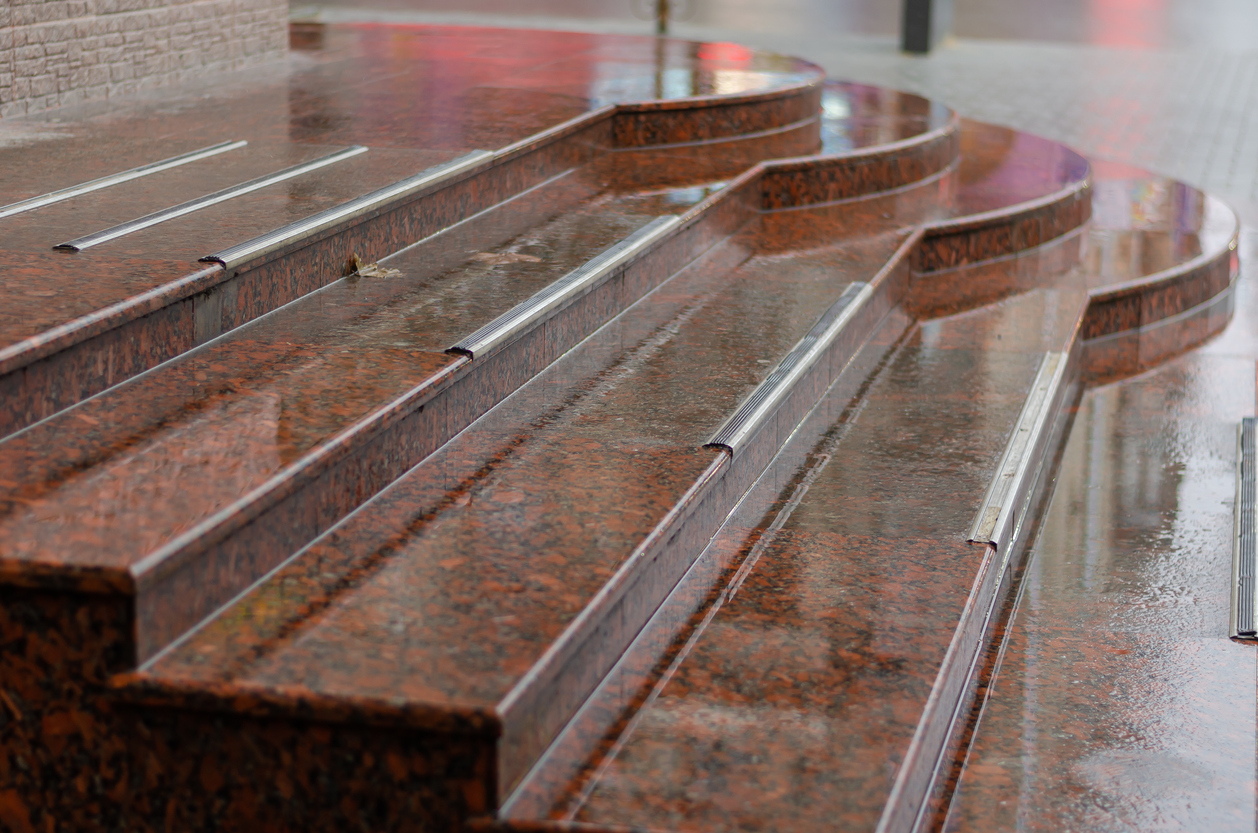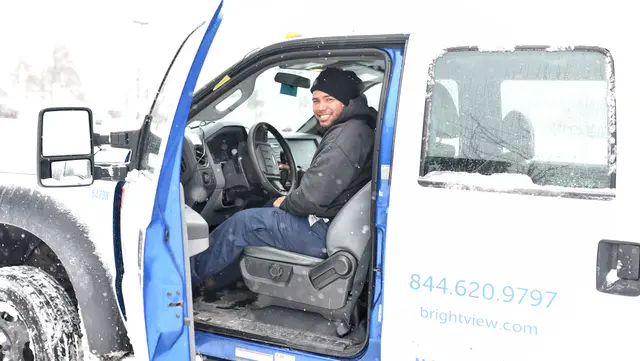
How to Avoid Slips & Falls on Your Property
Don’t Let Your Property's Risk Prevention Slip
The weather outside is frightful and so is the risk for slip injuries. The potential for slick sidewalks and pockets of ice are anything but delightful. If the thought of slip and fall injuries on your property sends a chill down your spine, it’s time to bolster your defenses.
Step 1: Walk the Property
Schedule some time with your landscape provider to walk your property. Take note of where puddles form; these are areas that are especially prone to developing ice during the colder months. Also, take note of slow to dry areas, such as those in the shade, or those that typically require non-slip mats during wet weather. Evaluate any steps or stairs—is there a rail that’s easy to access? Providing someone the opportunity to catch themselves on a rail can be the difference between a close call and a disaster. Finally, look for uneven walkways that could pose a trip hazard, such as cracked or buckled paths, or spots where tile or hardscape protrude.
Pay special attention to ADA-access ramps and high traffic areas, such as entrances, parking lots and shortcuts. And don’t forget to trace the steps of your employees, through side entrances, loading docks, and dumpsters.
Step 2: Walk it at Night

We promise, this will be your last lap. Take a spin around your property after the sun goes down to evaluate your outdoor lighting. Is it adequate? Or are there dark areas that create blind spots or have limited visibility? A dimly lit pathway can be dangerous should inadequate lighting fail to illuminate a slip or trip hazard. Parking lots are another common shortcoming for outdoor lighting, and in fact, tend to be one of the biggest culprits for slips and falls.
Step 3: Get Your Short-Term Remedies in Place
Now that you’ve identified the trouble spots, it’s time to take action. However, the fixes to some of these issues may not be immediate. In which case, it’s time to enact temporary solutions that can protect you in the interim, such as wet floor signs and floor mats in slippery areas. If it’s possible to re-route employees and visitors around potential dangers via signage or stanchions, that would be prudent.
Whatever you do, resist the temptation to make these temporary solutions permanent. While the risk may be lessened, it hasn’t been eliminated.
Step 4: Long-Term Solutions
Lean on your landscape partner’s expertise to help identify the underlying culprit responsible for your slip and fall hazards, and the appropriate remedy. For example, for slippery areas, is poor drainage to blame, or is the existing hardscape material inappropriate for the area? If your “fix-it” list feels unwieldy, your landscape partner can develop a plan that balances the needs with your budget over time, so you can truly retire that “wet floor” sign for good.
Step 5: Weather Extremes
Finally, be sure you have a plan in place for how weather extremes will be handled. For example, if there’s ice in the parking lot, who will respond? Or in the event of a severe storm, what’s the plan for removing debris and restoring accessibility and safety on your property? If you don’t have an in-house team to rely on for these services, talk with your landscape partner about developing a severe weather response plan. It will take the guesswork out of handling minor weather-related emergencies, and could save you money on your insurance premiums long-term by preventing potential claims.
Great Service, Beautiful Landscapes
Benefit from a comprehensive landscape maintenance plan designed to meet your needs and exceed your expectations, all delivered by a team invested in your success.



